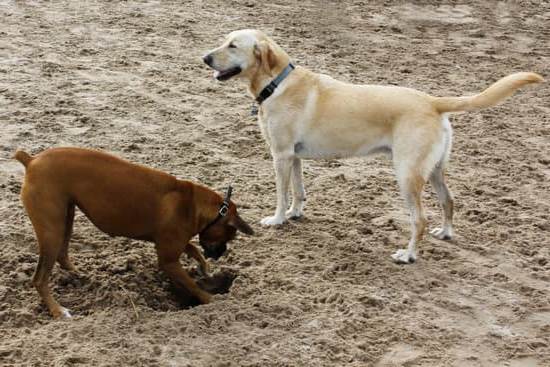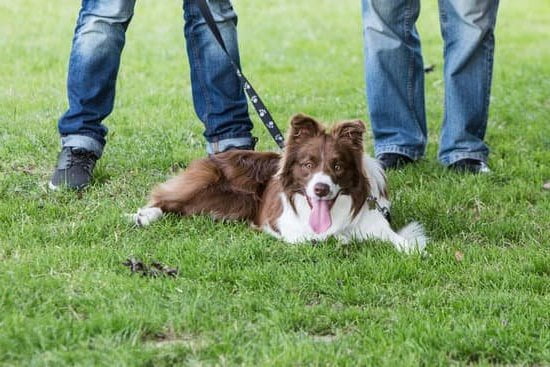Crate training is a valuable tool for pet owners looking to provide structure and comfort to their furry friends. It involves using a dog training crate as a safe and secure space for your dog, helping them feel at ease in various situations. Whether you’re welcoming a new puppy into your home or trying to establish boundaries with an older canine companion, crate training can be an effective method for promoting good behavior and reducing anxiety.
Using a dog training crate can offer numerous benefits for both you and your furry friend. From aiding in housebreaking efforts to providing a safe haven for your pup when traveling, the crate can be a versatile tool in your arsenal as a pet owner. However, it’s important to approach crate training with patience and understanding, making sure that your dog sees the crate as a positive space rather than a form of punishment.
In this article, we will explore the ins and outs of crate training for dogs, including how to choose the right crate for your pet, step-by-step instructions for introducing them to the crate, common mistakes to avoid, and advanced techniques for addressing behavioral issues. Additionally, we will discuss how positive reinforcement can play a key role in successful crate training and share tips on creating a comfortable and safe environment within the crate.
Join us as we delve into the world of crate training and discover how it can benefit both you and your beloved four-legged companion.
Benefits of Using a Dog Training Crate
Using a dog training crate can provide numerous benefits for both you and your furry companion. Here are some of the advantages of incorporating a dog training crate into your routine:
- Creates a Safe Space: A dog training crate can serve as a safe and comfortable space for your dog to retreat to when they need some downtime or want to feel secure.
- Aids in Potty Training: Crates can be instrumental in potty training puppies as it teaches them to hold their bladder and wait until they are outside to relieve themselves.
- Prevents Destructive Behavior: When you’re not able to supervise your dog, such as when you’re at work or sleeping, having them in a crate prevents them from chewing on furniture or getting into potentially dangerous items.
In addition to these benefits, using a dog training crate can also make traveling with your pet easier and can provide structure and routine for your dog’s daily life. It’s important to note that the key to successful crate training is using the crate in a positive manner and not as a form of punishment.
Overall, incorporating a dog training crate into your pet care routine can have numerous benefits for both you and your canine companion. It provides them with a safe space, aids in potty training, and helps prevent destructive behavior. By choosing the right crate and introducing it properly, you can help create a comfortable and secure environment for your furry friend.
Choosing the Right Crate for Your Dog
When it comes to choosing a dog training crate, there are a few important factors to consider in order to ensure that your dog is comfortable and safe. The first thing to take into account is the size of the crate. It should be large enough for your dog to stand up, turn around, and lie down comfortably, but not so large that they have enough space to use one area as a bathroom.
Another consideration when choosing a crate is the material it’s made of. Some common options include wire crates, plastic crates, and collapsible fabric crates. Wire crates allow for good airflow and visibility, while plastic crates can provide a more den-like environment for your dog. Collapsible fabric crates are lightweight and portable, making them a good option for travel or outdoor use.
It’s also important to take into account your dog’s behavior and temperament when choosing a crate. For instance, if your dog tends to chew or be destructive, a wire crate with durable construction may be the best choice. If your dog experiences anxiety or prefers enclosed spaces, a plastic crate may be the better option.
Ultimately, the goal of choosing the right crate for your dog is to provide them with a safe and secure space where they can rest and relax without feeling confined or anxious. Taking into consideration their size, material preferences, and behavior will help you select the best crate for your furry friend.
| Factor | Consideration |
|---|---|
| Size of Crate | Large enough for standing up, turning around, lying down comfortably |
| Material | Wire vs plastic vs collapsible fabric |
| Dog’s Behavior | Chewing tendencies or anxiety levels |
Step-by-Step Guide to Introducing Your Dog to the Crate
Introducing your dog to a dog training crate can be a smooth and stress-free process if done correctly. Here’s a step-by-step guide to help you introduce your furry friend to their new safe space:
1. Choose the right location: Select a quiet and peaceful area of your home where your dog can feel comfortable and secure. Avoid placing the crate in high-traffic areas or near loud noises.
2. Make the crate inviting: Place soft bedding, toys, and treats inside the crate to make it a welcoming space for your dog. You can also drape a blanket over the crate to create a cozy den-like environment.
3. Encourage exploration: Allow your dog to sniff, explore, and enter the crate on their own terms. Avoid forcing them inside or closing the door until they are comfortable with the crate.
4. Positive reinforcement: Use treats, praise, and encouragement to create positive associations with the crate. Whenever your dog voluntarily enters the crate, reward them with a treat and verbal praise.
5. Gradual acclimation: Once your dog is comfortable entering the crate, start closing the door for short periods while remaining in sight. Gradually increase the amount of time that they spend inside with the door closed.
6. Alone time: As your dog becomes more accustomed to being inside the crate with the door closed, start leaving them alone for short intervals. This will help them adjust to being separated from you while feeling safe in their new space.
By following these steps and being patient with your furry companion, you can successfully introduce them to their new dog training crate without causing stress or anxiety. Remember that each dog is unique, so it’s essential to progress at their pace and provide plenty of positive reinforcement throughout the process.
Common Mistakes to Avoid in Crate Training
Crate training can be a valuable tool for both dog owners and their pets, but it’s important to approach it with the right techniques to ensure success. Unfortunately, there are several common mistakes that dog owners make when it comes to crate training. One of the biggest mistakes is using the crate as a form of punishment. This can create negative associations with the crate and lead to anxiety or fear in your dog.
Another common mistake is leaving your dog in the crate for too long. While a crate can be a safe space for your pet, it should not be used as a long-term confinement solution. Additionally, some dog owners make the error of not properly introducing their dog to the crate or rushing the process. It’s crucial to take the time to familiarize your dog with the crate gradually, using positive reinforcement.
Using the wrong size crate is also a prevalent mistake. A crate that is too small can be uncomfortable for your dog, while one that is too large may interfere with housetraining efforts. It’s essential to choose a crate that allows your dog to stand up, turn around, and lie down comfortably.
| Common Mistakes | Consequences |
|---|---|
| Using crate as punishment | Creates negative associations and leads to anxiety or fear in dogs |
| Leaving dog in crate for too long | Can lead to discomfort and stress for your pet |
| Not properly introducing dog to crate | Can result in resistance or fear of entering the crate |
How to Use Positive Reinforcement in Crate Training
Positive reinforcement is a powerful tool in crate training your dog and can make the experience a positive one for both you and your furry friend. By using positive reinforcement, you can help your dog associate the crate with positive experiences, making them more likely to feel comfortable and secure in their new space.
Using Treats and Rewards
One of the most effective ways to use positive reinforcement in crate training is by offering treats and rewards. Start by placing some of your dog’s favorite treats or toys inside the crate to entice them to go in. As they enter the crate, praise them enthusiastically and give them a treat. This will help your dog associate the crate with something enjoyable.
Creating Positive Associations
To further reinforce positive associations with the crate, consider feeding your dog their meals inside the crate. This will help create a positive association between mealtime and being in the crate. Another helpful technique is to place a familiar blanket or item of clothing with your scent inside the crate to provide comfort and reassurance for your dog.
By using positive reinforcement techniques such as treats, praise, and creating positive associations, you can help your dog feel more at ease in their training crate. Remember to be patient and consistent, and soon enough, your furry friend may even start seeking out their crate as a safe and cozy retreat within your home.
Troubleshooting
Recognizing Crate Anxiety and Separation Anxiety
Crate anxiety and separation anxiety can manifest in various ways, such as excessive barking, whining, pawing at the crate, attempting to escape, or destructive behavior while in the crate. It’s important for dog owners to be able to recognize these signs in order to address the issue effectively. It’s also crucial to differentiate between crate anxiety, which is specific to being confined in a crate, and separation anxiety, which occurs when the dog is left alone.
Gradual Desensitization
One effective method for addressing crate anxiety and separation anxiety is gradual desensitization. This involves gradually increasing the amount of time the dog spends in the crate while implementing positive reinforcement techniques to create a positive association with the crate. Start by having your dog spend short periods of time in the crate while you are present, then gradually increase the duration as your dog becomes more comfortable.
Seeking Professional Help
In some cases, dealing with crate anxiety and separation anxiety may require professional assistance from a certified dog trainer or behaviorist. These professionals can provide personalized guidance and training techniques tailored to your dog’s specific needs. It’s important to remember that each dog is unique, and what works for one may not work for another when it comes to addressing anxiety-related issues with crate training.
By understanding and addressing crate anxiety and separation anxiety effectively, dog owners can ensure that their furry companions have a positive experience with their training crates and feel safe and comfortable when using them.
Tips for Making the Crate a Comfortable and Safe Space for Your Dog
When it comes to crate training, making the crate a comfortable and safe space for your dog is essential for successful training. One tip for creating a comfortable environment is to add soft bedding or a blanket to the crate.
This will not only provide a cozy spot for your dog to rest, but it can also help absorb any accidents or spills. Additionally, adding your dog’s favorite toys and treats to the crate can help create a positive association with the space.
Another important aspect of making the crate comfortable is ensuring proper ventilation and temperature control. Make sure the crate is placed in an area with good airflow and avoid direct sunlight or drafts. You should also consider the size of the crate – it should be large enough for your dog to stand up, turn around, and lie down comfortably.
Creating a routine around the crate can also help make it a comfortable space for your dog. Start by feeding your dog near the crate and gradually move the food inside. You can also leave the door open at first, allowing your dog to explore and enter at their own pace. This will help reduce any anxiety associated with being confined in the crate.
By following these tips, you can ensure that your dog’s training crate becomes a comfortable and safe space that they will come to see as their own special retreat. This is essential for successful crate training, as it creates a positive association with the crate and encourages your dog to view it as their own personal sanctuary within your home.
The Importance of Consistency in Crate Training
Consistency is key when it comes to crate training your dog. Whether you are introducing your furry friend to the crate for the first time or working on advanced techniques, maintaining a consistent routine is essential for success. Dogs thrive on structure and predictability, so providing a consistent environment during crate training will help them feel secure and confident.
One of the most important aspects of consistency in crate training is establishing a regular schedule for meal times, potty breaks, and crate time. By feeding your dog at the same times each day and taking them outside for bathroom breaks on a consistent schedule, you can help them develop a routine and learn to associate certain activities with specific times of day. This will make it easier for them to adapt to being crated during certain periods.
In addition to maintaining a regular schedule, it’s important to be consistent in your approach to using the dog training crate. This means setting clear rules and sticking to them.
For example, if you only use the crate as a quiet space for your dog to relax and sleep, avoid letting them out when they whine or bark. Consistently enforcing these rules will teach your dog what is expected of them while they are in the crate and help them understand that certain behaviors result in positive outcomes.
Advanced Crate Training Techniques for Dogs With Behavioral Issues
In conclusion, the use of a dog training crate can be an incredibly effective tool for helping dogs with behavioral issues. By implementing the advanced techniques outlined in this article, owners can work towards addressing and improving their dog’s problematic behavior. It is important to remember that each dog is unique, and their response to crate training may vary. Consistency, patience, and positive reinforcement are key components in successfully utilizing a dog training crate for addressing behavioral issues.
It is crucial for dog owners to understand that addressing behavioral issues through crate training requires time and effort. It may not yield immediate results, but with dedication and persistence, improvements can be seen over time. Additionally, seeking the guidance of a professional trainer or behaviorist may provide valuable insight into specific strategies tailored to a dog’s individual needs.
Owners should also focus on creating a comfortable and safe environment within the crate for their dogs. This means providing cozy bedding, toys, and ensuring that the crate is adequately sized for their pet’s comfort. By making the crate an inviting space rather than a punishment, owners can help alleviate any anxiety or negative associations their dog may have with the crate.
In closing, it is essential for owners to approach advanced crate training techniques with empathy and understanding towards their dog’s behavioral issues. With proper guidance and consistent effort, a dog training crate can serve as a valuable tool in addressing and improving problematic behaviors in our furry companions.
Frequently Asked Questions
Should I Crate Train My Dog at Night?
Crate training your dog at night can be beneficial for both you and your pet. It provides a safe and secure space for your dog to sleep, reduces the risk of accidents or destructive behavior, and can help with house training.
Is It Good for a Dog to Be Crate Trained?
Crate training can be good for a dog if done properly. It gives the dog a den-like space where they feel secure and comfortable. It also helps with house training and can prevent destructive behavior when you’re not home.
How Long Should It Take to Crate Train a Dog?
The length of time it takes to crate train a dog can vary depending on the individual dog. Some dogs may adapt to crate training in just a few days, while others may take longer. Consistency, positive reinforcement, and patience are key factors in successfully crate training a dog.

Welcome to the blog! I am a professional dog trainer and have been working with dogs for many years. In this blog, I will be discussing various topics related to dog training, including tips, tricks, and advice. I hope you find this information helpful and informative. Thanks for reading!





